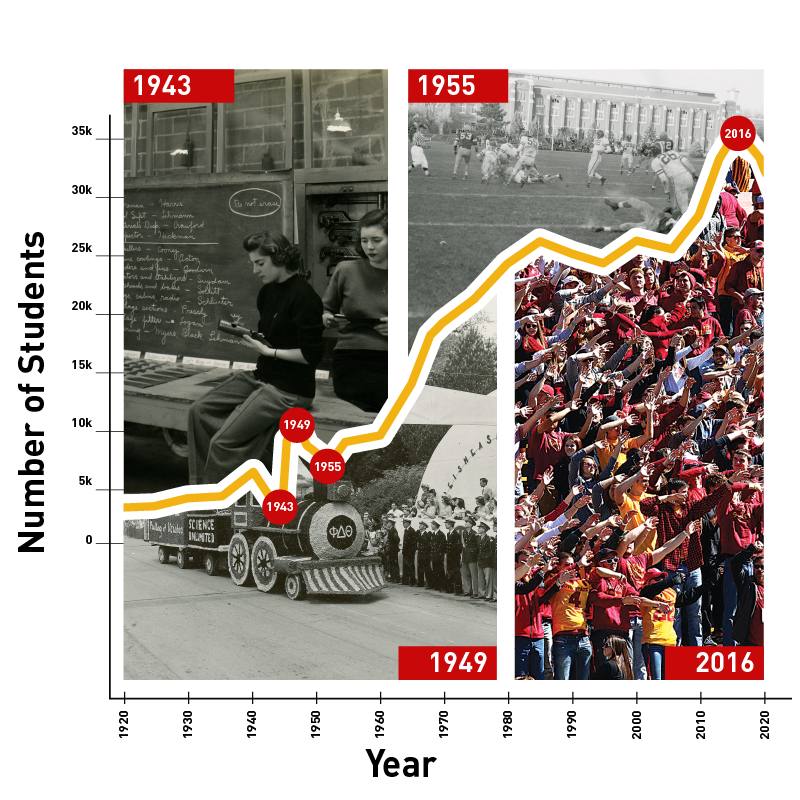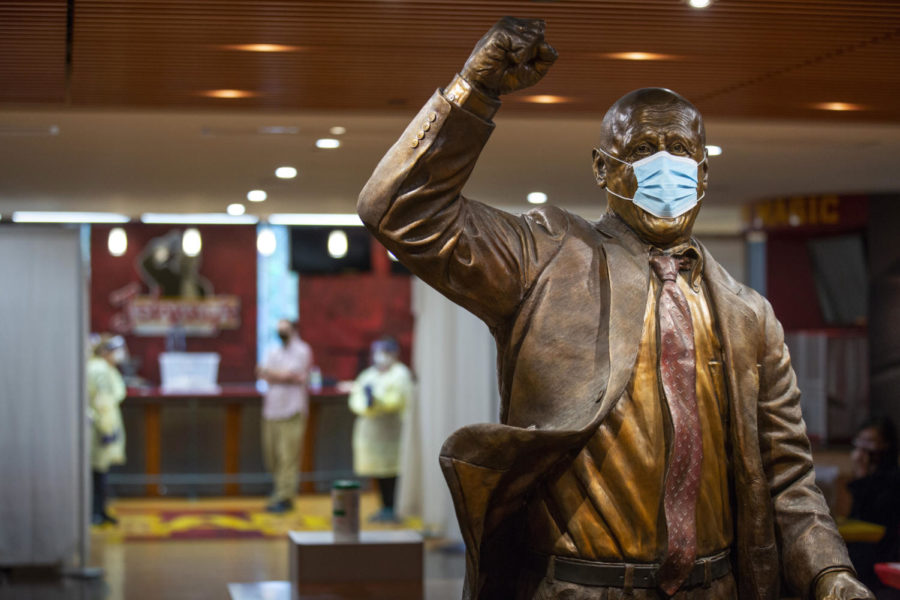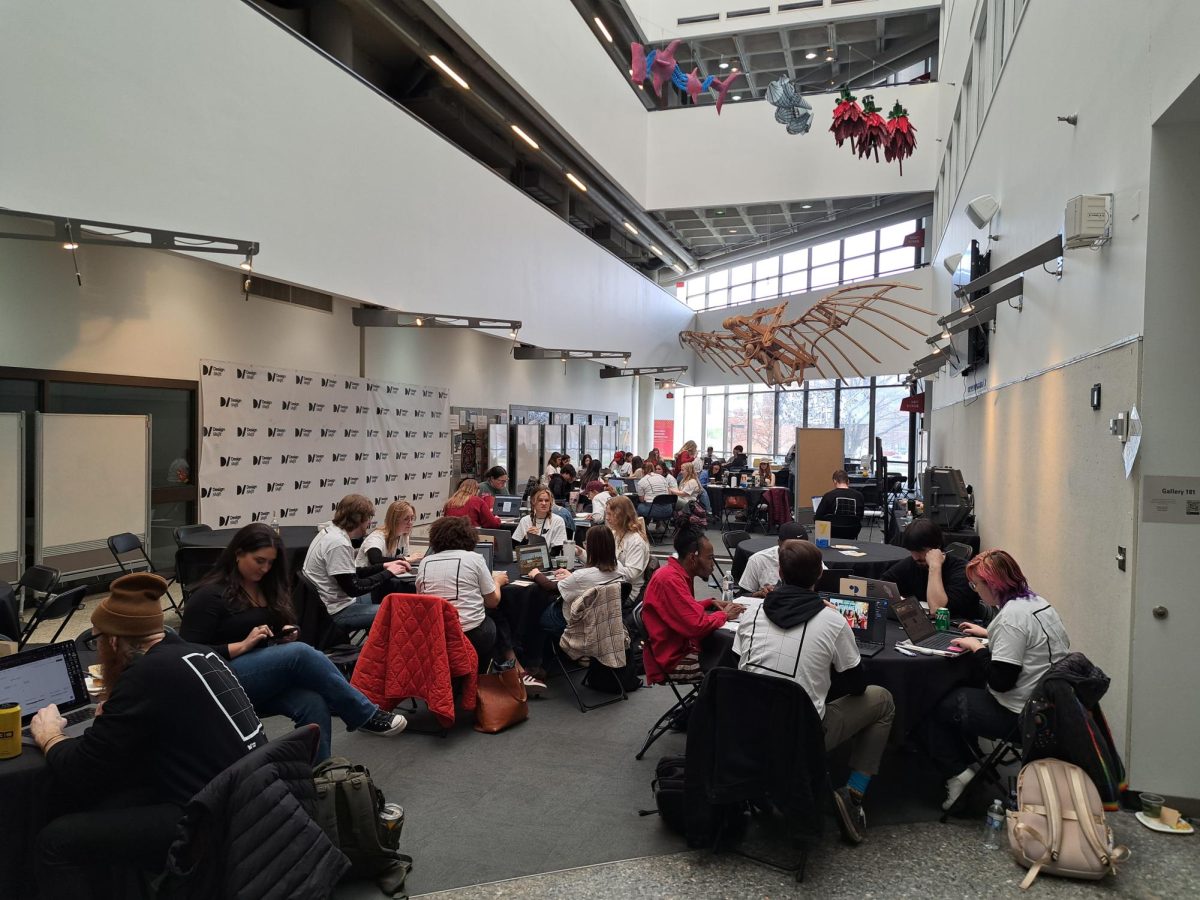Iowa State enrollment rose by 208 students compared to fall 2022. The 0.7% increase, from 29,969 to 30,177, marked the first enrollment increase since the university hit its all-time peak in 2016, when 36,660 students enrolled in classes.
The College of Engineering houses more students than any other college on campus, instructing 7,807 students.
After engineering, the College of Liberal Arts and Sciences instructs 6,762 students, followed by the College of Business with 4,820. The remaining rankings: the colleges of Agriculture and Life Sciences, Human Sciences, Design and Veterinary Medicine.
Prior to the six consecutive years of declining enrollment since 2016, the university experienced 10 years of growth from 2006 to 2016. In that span, the university increased enrollment by more than 11,000 students, from 25,462 in 2006 to 36,660 in 2016.
Iowa State also topped Iowa for the highest enrollment in the state in 2023 after having fewer students than the University of Iowa in 2022. Iowa State previously had the most students from 2012 through 2021.
Historical
The all-time high enrollment growth in the 2010s brought concerns surrounding campus infrastructure.
Articles published by the Daily leading up to the peak in 2016 expressed overflowing CyRide buses, sidewalks, classrooms and dining centers; increased toilet paper usage; conversion of dorm dens into four-person rooms and more.

Two of the largest changes in enrollment in university history came in the 1940s. From 1942 to 1943 the university saw 48.4% fewer students on campus, dropping from 6,054 to 3,126.
Greg Bailey, head of Special Collections and University Archives, said enrollment dropped during each of the world wars.
“In the 1940s with the outbreak of World War II and the push, the patriotic sentiment to go and sign up and join the military to serve the country during that, that would have a direct impact on students being enrolled at the university with them having to go in and serve in the different branches of the armed forces,” Bailey said.
Factors leading to decreased enrollment during wartime included a more immediate need for labor, pinched personal finances, being drafted to the military and more.
Bailey said while enrollment may have dropped during World War II, the campus was not completely bare.
Bailey said the number of students on campus actually did not drop as drastically as enrollment numbers suggest. Not everyone on campus was a student. Soldiers in training utilized the classes and expertise Iowa State had to offer.
“During World War II, we had military training going on, but those really weren’t students, per se, coming on campus,” Bailey said. “They were guys who were in the Army or the Navy or the Air Force that were being sent to ISU specifically to get very specific training because they had some of those set faculty members who could teach those things automatically.”
Those in training were learning at Iowa State but not necessarily progressing toward a degree, according to Bailey.
“[People in military training] were here on campus and going to classes, but they weren’t enrolled [or] listed as part of the degree-granting courses on campus,” Bailey said. “They weren’t coming here and giving three hours of credit in chemistry or civil engineering or something like that or aeronautical engineering. They were getting similar courses being taught, but they weren’t being granted those degree courses toward their bachelor’s degree.”
Shortly following the end of World War II, enrollment shot up in 1946 when the university saw a 170.5% increase in students, going from 3,407 to 9,216.
After World War II the GI Bill sent an influx of students back to college, sparking nearly double the number of students in 1946.
Between 1960 and 1980, there were two years with decreasing enrollment, both decreasing by less than two percent.
According to Bailey, the continued increase was due to the baby boom generation hitting college.
The baby boom generation sparked an increase in global population. The children of people who held off from having children during the Great Depression and World War II entered college during this era of enrollment increase.
Milestones
The 30,000-student mark was met for the first time in 2012 and was maintained until 2022, and it has now been met again this year.
Going back over 100 years, the university broke the 1,000-student mark in the 1900 school year, when 1,062 students studied at Iowa’s land-grant university.
Less than 50 years later, Iowa State broke the 10,000-student mark in 1948 but dropped below the year after. Enrollment stayed under 10,000 students until 1961, partially as a result of the Korean War.
The enrollment drop in the early 1950s coincided with the Korean War, where students may had stepped away, or been drafted away, from campus.
1975 was the first year Iowa State served more than 20,000 students, serving 21,205.













